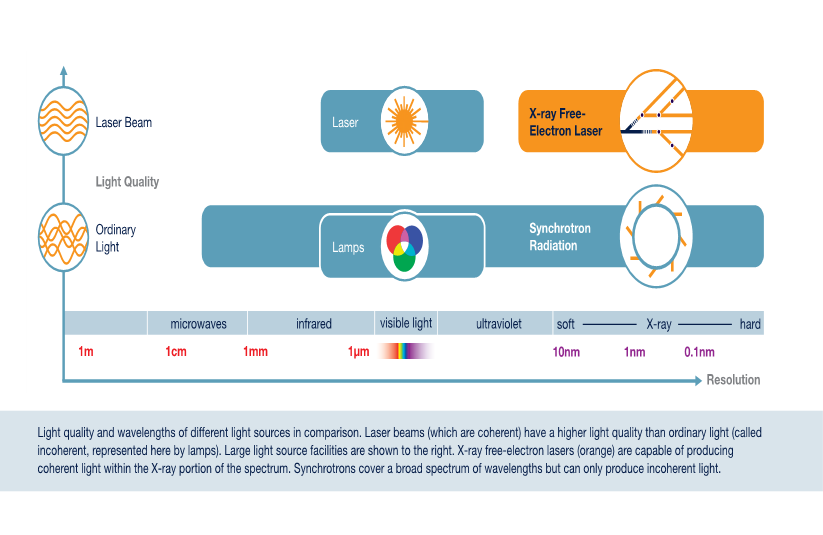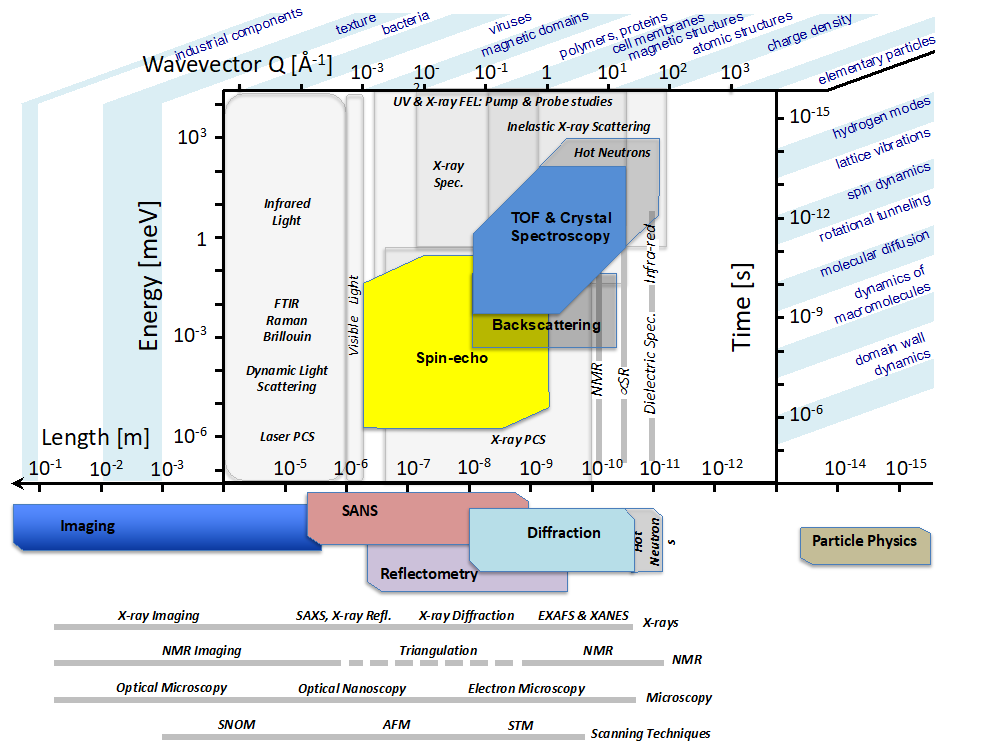Synchrotron radiation was first observed on April 24, 1947, at General Electric's research labs in the United States. At that time, synchrotron radiation was in fact viewed as an unwanted side effect, hampering the ambitions of physicists to reach ever higher energies in particle accelerators. Put simply, the charged particles in an accelerator emit radiation when travelling on a curved path at a velocity close to the speed of light. By emitting that so-called synchrotron radiation, the particles lose energy, hence their motion slows down. Synchrotron radiation is emitted within a narrow angle in the forward direction of motion of the charged particle. The synchrotron beam is thus highly collimated and and the desired wavelength can be selected from broad spectrum of the synchrotron radiation with a monochromator.
The usefulness of synchrotron radiation as an invaluable probe of matter was soon recognized. First experiments with synchrotron soft X-rays were conducted at Cornell University in 1956. Five years later, the first research program using synchrotron radiation was established at the National Bureau of Standards in the United States. Since then, synchrotrons improved at fast pace. Dedicated facilities have been built since the 1980s in which the focus resides on generating synchrotron light for research purposes. Medicine, materials science, biology, chemistry and geology have all greatly benefited from those developments.
Synchrotrons meant indeed a significant leap forward for research on the atomic structure of materials. But they have their limitations, too. Ultrafast processes crucial to many disciplines from biochemistry to materials science lie beyond their reach because light pulses produced at synchrotrons are not short enough. Due to their insufficient brightness, synchrotrons are also limited when it comes to the elucidation of the atomic structure of ultrasmall samples like nanostructures or some proteins.
From Waste Radiation to Light Sources
Over more than 60 years synchrotron radiation facilities have evolved from parasitic operation at particle accelerators to dedicated research tools. Since the first observation of synchrotron radiation, three generations of facilities have been developed.





